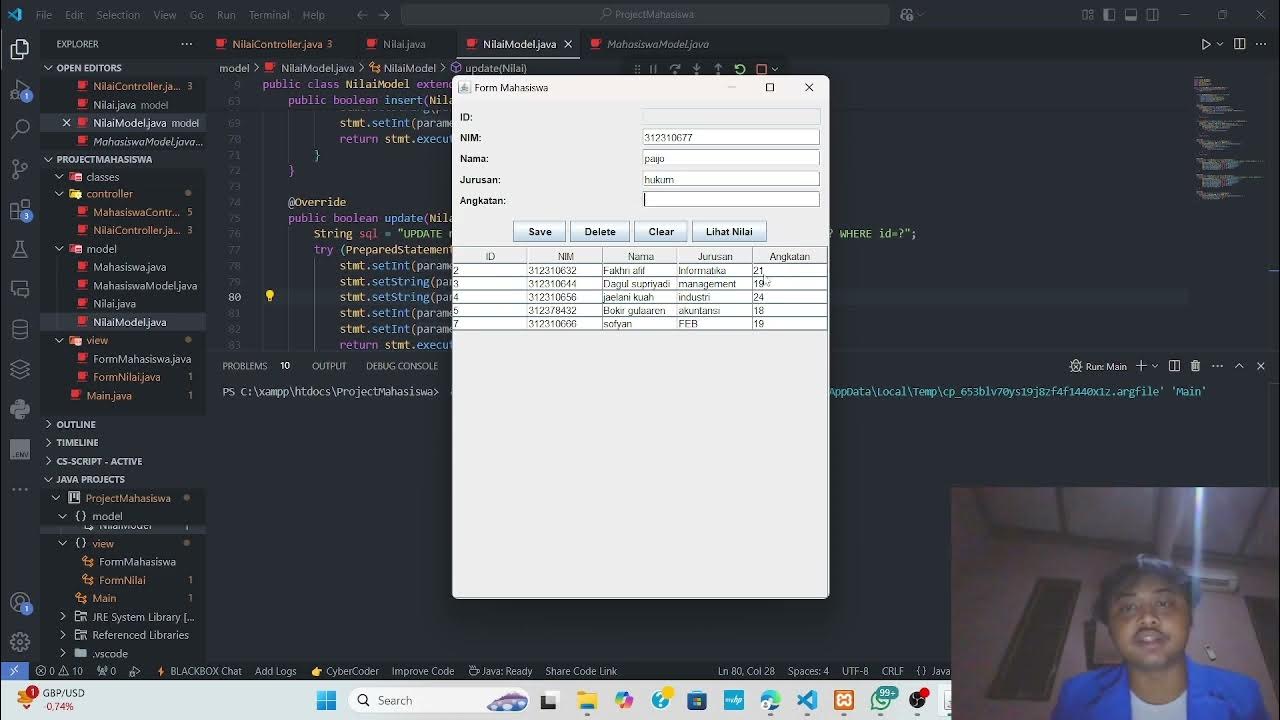MVC // Dicionário do Programador
Summary
TLDRThis video introduces the MVC (Model-View-Controller) software architecture, explaining its core components and benefits. MVC is a widely used framework, especially in web development, for organizing code into three separate layers: Model (data handling), View (user interface), and Controller (managing interactions). The video also discusses its history, advantages such as code reuse and ease of maintenance, and the importance of frameworks like Rails, Spring, and Angular. It highlights that although MVC is a helpful pattern, improper use or neglecting its structure can lead to poor code practices.
Takeaways
- 😀 MVC stands for Model-View-Controller, a software architecture pattern used widely in software development, especially in web development.
- 😀 The MVC pattern divides an application into three layers: Model, View, and Controller, helping separate concerns and improving maintainability.
- 😀 Model handles data and logic of the application, interacting with databases or external APIs to fetch and manipulate information.
- 😀 View is responsible for the user interface, formatting the data from the Model and presenting it to the user.
- 😀 Controller acts as the intermediary, processing user requests, calling the Model for data, and sending the response to the View for rendering.
- 😀 MVC helps with code reuse across different projects, allows for easy maintenance, and supports the creation of multiple user interfaces without altering business logic.
- 😀 Some disadvantages of MVC include initial complexity and the time required for proper planning and understanding of the layered structure.
- 😀 Common frameworks that use MVC include Ruby on Rails, Spring, Struts, Laravel, React, Angular, ASP.NET, Django, and others, each with unique implementations.
- 😀 MVC is not a design pattern but rather an architectural pattern, and while you can deviate from its principles (e.g., mixing database queries in the Controller), it's generally discouraged.
- 😀 While MVC is widely used, other architectural patterns like MVP (Model-View-Presenter) and MVVM (Model-View-ViewModel) exist, but these are topics for other discussions.
Q & A
What does MVC stand for and what is its purpose?
-MVC stands for Model-View-Controller. It is a software architecture pattern used to separate an application into three interconnected components: Model (data), View (user interface), and Controller (business logic). This separation improves organization, maintenance, and code reusability.
How did MVC originate, and who is credited with its creation?
-MVC was created in 1979 by Trigg R, a Norwegian computer scientist. He developed the pattern for designing graphical user interfaces (GUIs) in software development.
What are the main advantages of using MVC in software development?
-The advantages of MVC include improved code reusability, easier maintenance, better separation of concerns, and the ability to create multiple user interfaces without altering business logic. It also enables the use of templates and APIs without modifying the core code.
What are the three layers of MVC, and what does each layer do?
-The three layers of MVC are: 1) Model - responsible for data handling, like database queries and API calls. 2) View - responsible for displaying the user interface and presenting data to the user. 3) Controller - handles user input, retrieves data from the Model, and passes it to the View for rendering.
How does the Controller interact with the Model and View in MVC?
-The Controller acts as the mediator between the Model and View. It receives user requests, fetches data from the Model, and then formats and sends the data to the View to be presented to the user.
Can you explain how MVC facilitates creating multiple interfaces for the same application?
-MVC allows developers to create different user interfaces (Views) while keeping the underlying business logic (Model) intact. This makes it easier to create different front-end interfaces without affecting the back-end logic.
What is a Router in MVC, and what role does it play?
-A Router in MVC is responsible for defining the routes that map URLs to specific Controller methods. It ensures that user requests are correctly routed to the right part of the application for processing.
What are some common frameworks that use MVC, and what programming languages do they support?
-Common MVC frameworks include Ruby on Rails (Ruby), Spring (Java), Laravel (PHP), Angular (JavaScript), ASP.NET MVC (C#), and Django (Python), among others.
What are the main disadvantages of using MVC?
-The main disadvantages of MVC include the complexity of understanding the concept, the initial time needed for planning the application's structure, and the potential for messy code if developers do not follow the MVC principles strictly.
Is MVC the only architectural pattern available for software development?
-No, MVC is not the only architecture pattern. Others include MVP (Model-View-Presenter) and MVVM (Model-View-ViewModel). Each has its own use cases, and choosing between them depends on the specific needs of the application.
Outlines

This section is available to paid users only. Please upgrade to access this part.
Upgrade NowMindmap

This section is available to paid users only. Please upgrade to access this part.
Upgrade NowKeywords

This section is available to paid users only. Please upgrade to access this part.
Upgrade NowHighlights

This section is available to paid users only. Please upgrade to access this part.
Upgrade NowTranscripts

This section is available to paid users only. Please upgrade to access this part.
Upgrade NowBrowse More Related Video
5.0 / 5 (0 votes)





